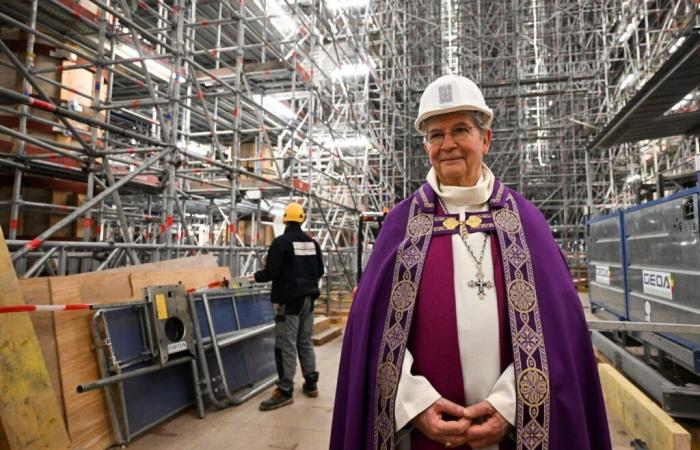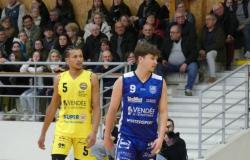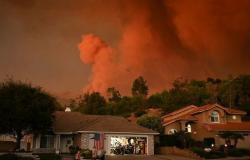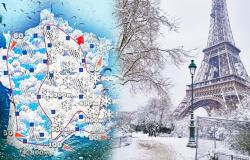The Cross : How do you reread this five-year project? What human and spiritual adventure did it represent?
Mgr Laurent Ulrich : Everyone who worked on this site had the feeling of not only doing their job, but of fulfilling a true personal vocation. Many testified to a spirit of cooperation between the 250 companies which worked in harmony, in great coherence. These are beautiful signs, very encouraging in an era marked by individualism where everyone seeks to do well.
This project was, however, marked by certain tensions, regarding the choice of liturgical furniture, the question of stained glass windows, etc.
Mgr L. U. : It is the sign of life. We can have different opinions on the conduct of this or that thing. It means that we discuss, that we take the time to agree. Some will disagree, but once it's decided they accept that the decision is someone's. When I chaired the artistic committee for the choice of furniture, everyone had the right to speak. the artistic committee for the choice of furniture, everyone had the right to speak. But at some point, a path became clear to a decision and the manager that I am was led to make this decision. I did it in line with what I wanted, while taking into account the opinions that were expressed.
It is rather on the side of the Church that we wanted to innovate, to move towards something obviously more modern…
Mgr L. U. : It's often like that, contrary to what we believe. It was Bishop Maurice de Sully who decided to replace the previous churches with this cathedral, it was he who began to make a Gothic church. The cathedral is not a museum in which antiquities are kept, but a living place in which we pray to the Lord, in a time which continues, which uses new techniques. For example, the framework was not redone in the same way above the nave and above the transept. One was rebuilt more in the style of the 13th century, and the other in the style of the 19th century, to demonstrate these two important eras for the framework. This means that the layers of history are consistent with each other. It is not because an element is contemporary that it clashes with what has gone before.
The new face of Notre-Dame will be revealed first to Emmanuel Macron on November 29, a week before the official inauguration by the Church, with cameras even though there was an embargo on images. Is this the illustration of a tension between spiritual place and political symbolism?
Mgr L. U. : It is to the President of the Republic that we owe this rapid reconstruction, no one can forget it. Commentators are always looking for opportunities for conflict but that is not the point. Notre-Dame is a place of national scope, of the common good, a place loved by Catholics but not only.
Will the reopening ceremonies on December 7 and 8 have a global impact comparable to the coronation of the king in Great Britain?
Mgr L. U. : It is not the same context, but it is an event of national magnitude, with a public dimension, not just Christian. This public dimension will be affirmed by a Catholic celebration, Saturday evening and Sunday. We continue to propose faith as the vector which made this cathedral possible and which justifies that we still use it as such today. There is a central dimension in this reopening. It won't just be a ribbon cut at the entrance to a restored establishment.
What will we experience during this reopening?
Mgr L. U. Christ will be at the center. When I open the door, I will knock on Christ's door. We will enter under the portal of the Last Judgment, as the visitors and the faithful will then do, because the direction of the visit which will be proposed has been modified to bring those who enter Notre-Dame into contact with the Christian mystery. Once entered, they will see the baptistery, the gateway to Christian life, the altar, which is the place of Christ's sacrifice, the ambo which is the place of the proclamation of the word of God and the cathedra, which recalls the ministry of service that the bishop is called to render.
350,000 donors contributed to the reconstruction of Notre-Dame, what does that mean to you?
Mgr L. U. : There aren't many fundraisers that can reach so many donors in just a month. Some were very modest, but they wanted to participate. This is indicative of a very deep attachment to Notre-Dame. One of the symbols of France are churches, particularly cathedrals, and especially this one. This indicates that all of life is not contained simply in material affairs, a search for well-being, but in a higher dimension which is figured by the Christian mystery.
Among the catechumens you meet, whose letters you read, were any affected by the fire at Notre-Dame?
Mgr L. U. : Of course, this is a very frequent and increasingly strong component of requests for the sacrament: many have come to the faith, which was not offered to them when they were children or adolescents, through the atmosphere of a church … They discovered that churches were not museums but places of life where they could find an interior setting, the ability to pray, fraternity and a spiritual dynamic… The fire of Notre-Dame was at the origin for some of a spiritual quest. Many were deeply moved.






